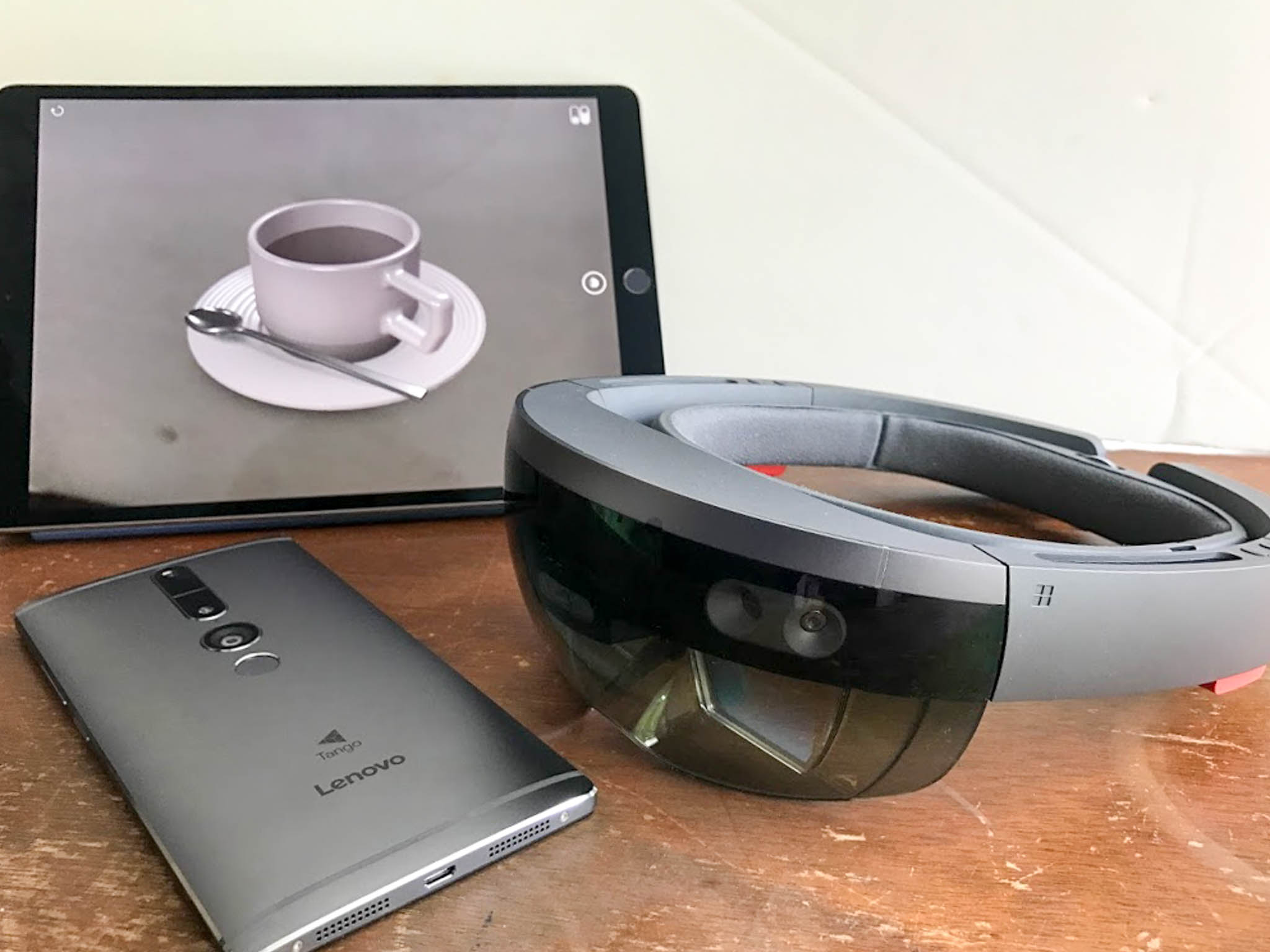Three deep breaths everyone needs to take when talking about Apple AR

After what feels like years of rumors and overhype, Apple's plans for Augmented Reality have been laid out for the world to see. There's no Iron Man-style fully transparent display coming to the next iPhone, no holographic projectors embedded in the next iPad, and at least for now there are no futuristic glasses to augment the world. What we are getting from Apple is, in many ways, much better. We're getting a platform no other company can deliver right now, Augmented Reality every iPhone owner can have all at once.
It's going to be a fun year, but the conversations that are bound to happen next require some perspective.
"Inventing" Augmented Reality

On stage at WWDC, Apple said ARKit would be the largest AR platform overnight. That is both true and not quite reality, depending on how you interpret what was said. If you look at the underlying technology driving ARKit, it will be nowhere near the largest platform. Qualcomm's Vuforia works on Android, Windows 10, and of course iOS. That's obviously a considerably larger collection of devices, but there's a reason you've never heard of Vuforia before — no one uses it unless they are explicitly told to.
Even without a "killer app," there will be more people ready to use Augmented Reality just by owning an iPhone than has ever happened before.
Until Pokémon Go started grabbing eyeballs all around the world, Augmented Reality was almost entirely used for advertising. When Avengers hit theaters, Wal-Mart had a special collection of frozen pizza boxes that showed you the big Avengers Tower fight if you pointed your phone at it after installing an app. You can go just about anywhere and find lots of one-off examples like this, but they're all basically the same. Simple promotion things and very little else.
By rolling ARKit out to every iOS device on the planet, developers can build Augmented Reality features into anything. Instead of an app needing to be installed just for accessing something in AR, these features will just sort of be there the next time a user goes to look at something on their phone. This of course also means lots of full AR apps and games are coming, as we saw with the impressive Wingnut Studios demo on stage at WWDC.
Read More: Apple ARKit vs Google Tango vs. Microsoft Hololens
Even without a "killer app" there will be more people ready to use Augmented Reality just by owning an iPhone than has ever happened before. Providing access to AR clearly isn't enough to make it popular, or everyone would already be using it. The thing Apple is making possible here is a way for developers to integrate AR both simply and wholeheartedly. It will be the biggest platform overnight because there will be lots of people using it and lots of apps giving people a reason to either dip their toes into AR or take over the living room with a sci-fi western playing out on the coffee table.
Master your iPhone in minutes
iMore offers spot-on advice and guidance from our team of experts, with decades of Apple device experience to lean on. Learn more with iMore!
No one is "winning" AR this year

Apple bringing a lot of people to Augmented Reality this year is going to cause a lot of thoroughly well-earned excitement, but it's also Day One in the life span of consumer AR. Everything up to this point, including Pokemon Go, included AR as a thing that hopefully caught the attention of a larger audience. Augmented Reality was not the feature — it was the pretty packaging to lure you in to something else. Until recently, that something else usually involved more advertising.
This spike in users is all about answering these use case questions, and those answers will not be exclusive to ARKit.
The grand experiment here is to see if people are really ready to see Augmented Reality as a product, which means showing them apps that are truly best experienced by integrating some kind of physical element in the real world. I can see the progress line from my last run on a 2D map on my phone, but is it more impactful if I see it on a 3D map drawn on my desk? Will being able to physically walk around that map help me make better decisions about my next run? Those are the kinds of practical questions developers will be encouraging users to answer when iOS 11 launches.
The same can be said for games — multiplayer games perhaps more so than single player. Will I be able to share a 3D map of my Minecraft world on the living room floor for everyone to enjoy, and will that be the new "must have" feature in my other games? What about streaming games in AR, so the user can choose the camera angle while I complete a puzzle or beat someone in a 1v1 fight?
This spike in users is all about answering these use case questions, and those answers will not be exclusive to ARKit. It will be a long time even after this initial spike of interest before Augmented Reality reaches the kind of user volume required to call any one company or technology in this space a "winner" and that's important. Apple and its developer partners are going to be learning from every minute of AR use in iOS 11, and using that to make ARKit even more impactful in iOS 12. This is a marathon, and it's pointless to call any participant the winner on the first step of the race.
There is no such thing as Apple AR

By far the most impressive thing from Apple's introduction of Augmented Reality on stage at WWDC was the refusal to brand this technology. What is coming to iOS 11 isn't Apple AR, or iReality, or anything like that. ARKit is something any developer can use to add any amount of Augmented Reality to every app. Augmented Reality is going to be just another tool instead of this standalone thing in need of a separate hype machine, and not only is that incredibly important but it's exciting to see Apple understand this so fundamentally.
Augmented Reality can't be the reason someone installs an app, it needs to be the reason someone keeps an app installed.
Augmented Reality can't be the reason someone installs an app. Instead, it needs to be the reason someone keeps an app installed. Even during the WWDC demos, instead of saying "here's an Augmented Reality app," we got "here's a story we feel is best experienced with Augmented Reality" — that messaging is going to be a big deal moving forward. While Apple's competition is trying to brand the "spectrum" of experiences between Virtual and Augmented Reality technologies, this ecosystem will be filled with apps which either also happen to offer Augmented Reality experiences or will be best enjoyed when you have time to explore them with Augmented Reality tools. Users will proceed at their own comfort level without ever needing to think about the underlying technology. It's a smart and entirely unsurprising move from the Apple playbook.
It's a great thing to be excited about ARKit and what it will bring, but the larger message here is the way Augmented Reality will be woven into iOS experiences. It doesn't require special head gear, and the benefits to upgrading your phone for better AR experiences are a cherry on top of an already cool experience. Once users have these tools, Apple can focus on making them more impactful with things like special glasses.
For now, it's all about making AR a seamless part of your life.
Russell is a Contributing Editor at iMore. He's a passionate futurist whose trusty iPad mini is never far from reach. You can usually find him chasing the next tech trend, much to the pain of his wallet. Reach out on Twitter!

